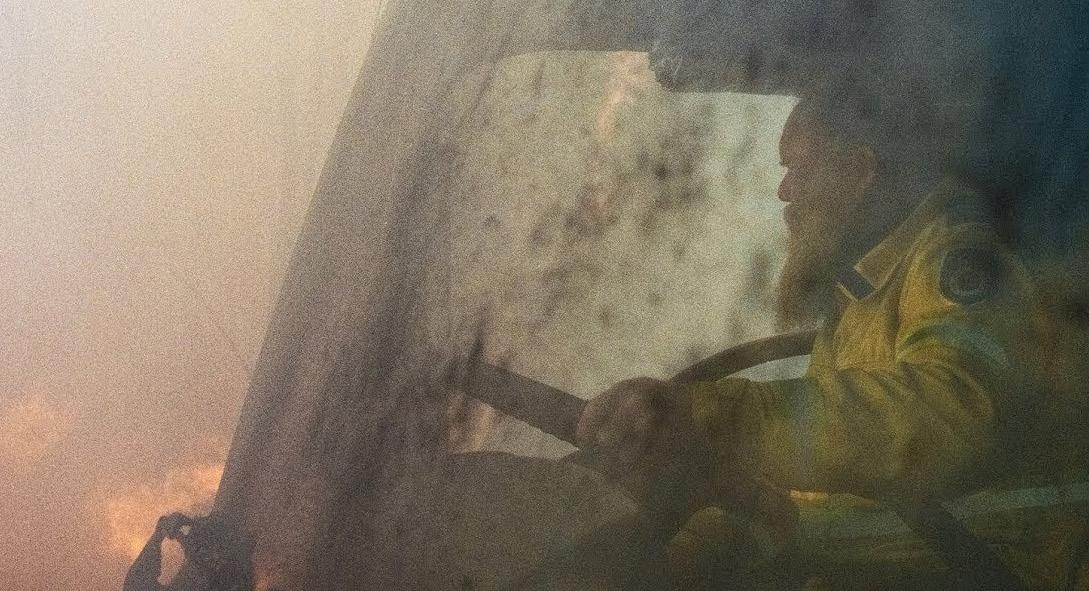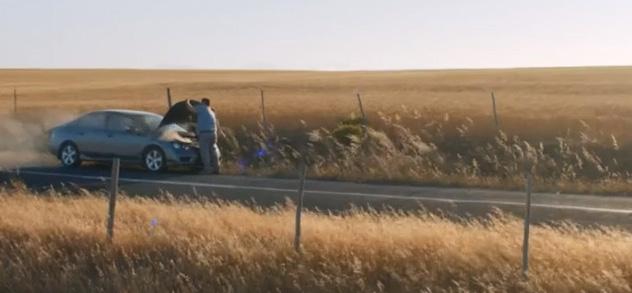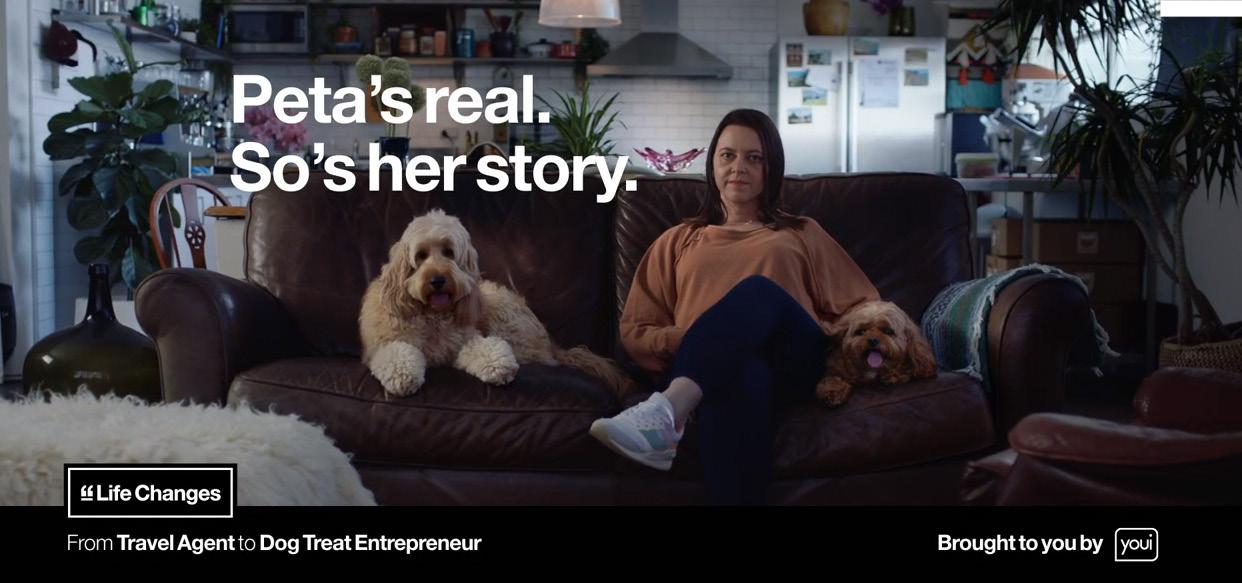
10 minute read
Insurance Ad Oscars 2020
Insurance Ad Oscars 2020
By Kim McNeil, Partner at The Lead Agency
Advertisement
Which insurance ads hit the mark this year, and could they have been even better?
It’s that time of year again where HR reminds us what is acceptable behaviour at the work Christmas function, we try to think of different excuses to get out of the number of end-of-year-event invitations, and Insurance News publishes its annual Insurance Ad Oscars.
In keeping with the tradition of the Ad Oscars, we defer to the considerable expertise of insurance marketing consultants, The Lead Agency. Its team has looked at the insurance TV commercials that have run throughout the year, and awarded the insurers, brokers and underwriters that did it well with a critically acclaimed ‘Insurance Ads Oscar’.
From Kanye West as presidential candidate, to the rise of Tiger King Joe Exotic and Carole Baskin, 2020 has been a year like no other.
It began with state of emergency declarations in several states hit by severe bush fires, not to mention the destruction of millions of acres of land, homes and businesses. Still recovering, the country was then thrown into chaos as a result of the global pandemic COVID-19.
Working and playing from home became the new normal, and thousands of businesses had to close, or significantly alter the way they operate to survive.
We all had to pull together and find a way to stay alive and relevant in the face of so much uncertainty. Those in the insurance industry were no different.
The shift in behaviour has impacted how insurers, brokers and underwriters operate and communicate with their clients and potential clients.
This year insurance advertising had to look beyond the typical marketing tactics and find ways to resonate, and genuinely help the businesses that they work with – many of which were forced to close for a substantial part of the year.
So, this year’s Ad Oscars are looking at the companies that have altered their marketing strategy to address the world around them.
The “Well That Was FireTrucked” Award
Criteria:
Awarded to the ad that tapped into consumer emotion to drive meaningful action to improve behaviour
Winner:
NRMA Insurance youtube.com/watch?v=RkrYxSuBZhM

Emotion in advertising is something that NRMA Insurance often uses in their campaigns, winning last year’s award for “best use of emotion in advertising”. This year, NRMA Insurance focused on raising awareness around bushfire protection – an issue that rose in prominence for Australians.
The First Saturday campaign encouraged Australians to perform a task on the first Saturday of every month to make their homes more bushfire-ready. The campaign used re-enacted footage of RFS volunteer firefighters inside a fire truck to remind Australians of the devastation bushfires have caused in the last decades.
Controversially, NRMA Insurance’s ‘First Saturday’ campaign was pulled from TV after the advertising industry body Ad Standards received complaints from viewers that the footage was distressing. An RFS volunteer said that the campaign was “very disturbing and in poor taste,” while a parent of an RFS volunteer stated “I find this extremely disturbing and upsetting, as this could be my son in a few months’ time”. Another complaint questioned the relevance of the ad to NRMA Insurance. “The campaign seems to be designed to reduce NRMA insurance liabilities not help first responders.”
Ad Standards ruled that the ad had breached the Code of Ethics, based on the portrayal of violence. However, NRMA Insurance responded to complaints, stating that the ad was created in consultation with the RFS, the Australian Red Cross and the SES, to make the re-enactment as realistic and safe as possible, and to ensure the ad was appropriate for television.
Advertising offending its viewers is nothing new; in fact, Insurance News has covered similar stories in the past.
As reported in February 2015, Ad Standards received complaints about a Budget Direct advert. The advert showed a character called Captain Risky diving into shallow water and driving a car off a tall ramp. Viewers were concerned it may encourage children to perform dangerous stunts.
Others complained about a Bingle ad (in 2015), which featured a computer-generated chimpanzee skydiving while blindfolded and then driving, stating that it promotes animal cruelty. In both of these instances, media regulators dismissed consumer complaints about the adverts, and the insurers did not take their campaigns off the air.
What’s the difference here? The message is about mitigating risk, the opposite of the complaints against Budget Direct. Unlike Bingle, there was in-depth consultation with relevant stakeholders (although we concede there could have been a chimpanzee focus group).
As the verdict was based on the “portrayal of violence”, perhaps NRMA Insurance’s topic was too sensitive and too soon. But that emotional balancing act is something advertisers often deal with to influence and persuade us.
The Transport Accident Commission (TAC) in Victoria has famously/infamously pushed a shocking and emotional strategy. It is open about how their road safety campaigns and commercials depict real-life situations to demonstrate the reality of what happens when you are undertaking dangerous driving practices. TAC declared it their mission in 1987 to “upset, outrage and appal” Victorians to reduce the number of road deaths in the state.
TAC has stated that it shows “highly emotional style commercials because they’re very good at reaching hard to talk to and tough audiences”. They also spark debate and get people talking, which makes it more likely that the message will stick in their memory. And it works. When the campaign started in 1989, the road death toll in Victoria was 776 in a year.
Last year, the total was down to 229. We would argue that this could have been the same for NRMA Insurance. Had its message got out to the masses, more people would be aware and ready for this year’s fire season.
WHAT WE LOVE
People rely on emotions, rather than information, to make brand decisions, and emotional responses to ads are more influential than the content of an ad. Using footage that evokes an emotional response is one of the most effective ways to generate a positive reaction.
One of the complaints received was that “the campaign seems to be designed to reduce NRMA insurance liabilities not help first responders”. Considerable public perception of insurance is as a fall-back option. This campaign is just another example of the insurance industry showing that minimising risk is always better than coping with the fallout.
Advertising influences people’s understanding of the world around them. NRMA Insurance is using its advertising budget, not on self-promotional material, but instead to create positive behavioural change.
WHAT COULD BE IMPROVED
Sometimes, being too controversial, going beyond the obvious, or making provocative statements can alienate the audience.
The “When-did-they-stop-calling-it-coronavirus?” Award
Criteria:
Awarded to the business that used their advertising to communicate how they can support their clients during challenging times
Winner:
AAMI youtube.com/watch?v=1jib25Y1-9o

AAMI’s advertising campaigns have long focused on helping Australians get “back on the road”. During the COVID-19 pandemic, the company recognised how important it was for those on the front line to get to where they need to be. For their 2020 campaign, AAMI offered Free Roadside Assist to all doctors, nurses, hospital staff and first responders Australia-wide, whether they were AAMI customers or not. This campaign was part of parent organisation Suncorp Group’s “Peace of Mind” relief package, which offered financial assistance for customers struggling during tough economic times.
WHAT WE LOVE
The most successful businesses are not focused solely on profit. They are also focused on their people and their customers and providing more comprehensive benefit to society. With this campaign, AAMI showed that it cares about people more than profit.
The ad also has a cameo from AAMI’s (in) famous drag queens, which were introduced in 2018 to embrace acceptance in Australia.
WHAT COULD BE IMPROVED
The ad could have been tailored more to the audience and their current situation, showing healthcare workers and how the roadside assist offering could be of benefit to them.
Runner Up:
QBE youtube.com/watch?v=1GIQJVpZ4rg

After the first lockdown, QBE ran a TV ad talking about how restrictions were lifting and that we all had to adapt to the “New Normal”.
The ad used real clips from news bulletins to show how tough things had been and iterating that they were supporting their customers as they gradually and safely returned to offices. The ad detailed practical elements that businesses should be aware of, such as hygiene, hand washing, sanitising and physical distancing practices. Ending with a feel-good factor, QBE reminded everyone that we would stick together and never stop connecting. #DoTheRightThing
WHAT WE LOVE
Human beings crave a sense of belonging and being understood. While providing practical tips, this ad also had a great community feel that would generate an emotional response and make an impact on viewers.
WHAT COULD BE IMPROVED
Like NRMA Insurance, QBE risks a backlash from viewers who question the relevance of the ad. There was a proliferation of information about the pandemic, from government resources to news stories – and most people couldn’t avoid it even if they tried. They may prefer if the insurer gave a different perspective on this information that was more relevant to their services.
Immersive Advertising Award
Criteria:
Awarded to the ad that best incorporated the 2020 environment into their advertising campaign
Winner:
Youi youtube.com/watch?v=zWUE84tBQwY

Since entering the Australian market in 2009, Youi’s advertising has focused on communicating how they get to know their individual customers to tailor insurance to their needs, rather than treating them as a demographic within a postcode.
Their 2020 campaign ‘Insurance for individuals like…’ (youtube.com/ watch?v=4cUg6_q4AqE) featured stories about real people and their individual characteristics and how this altered their insurance premium.
As the pandemic took hold, the campaign pivoted to ‘Life Changes’ where the insurer claims that they will provide insurance options for where their client’s life is at, no matter how much it has changed.
WHAT WE LOVE
Youi’s advertising features real people. This tactic works in advertising as people relate to other people who are like them, a strategy more useful in 2020 when people were more empathetic and felt more bonded together than ever.
WHAT COULD BE IMPROVED
Youi claims that “the less risky you are, the cheaper your premium is”, which in theory, sounds great. However, we wonder how this would pan out in practice. It’s excellent that Youi is trying to get to know their customers, but how many fields can their forms realistically have? If they asked for too much information, this would likely have the opposite effect and put people off.
Runner Up:
iSelect youtube.com/watch?v=t5B2Q19tgxk
Although not a business that would come to mind when we think of insurance, iSelect is close enough to the insurance industry to get a mention – particularly when their ad was so entertaining. iSelect’s “Compare. Select. Save.” campaign incorporates several short TV ads with colourful, graphic characters. During the COVID-19 pandemic, one of the ads showed a woman working from home, and signing in to an online meeting – as we’ve all done so often during 2020.
We all know the challenges this has brought, from young children to needy pets, interesting housemates and partners all stumbling into the calls uninvited. For this particular ad, iSelect used one example that made the news, where a woman’s partner unknowingly walked in front of the camera naked.
They claimed that they couldn’t help with this issue, but they could help compare products.
WHAT WE LOVE
The advert was a humorous way to incorporate the current situation into the campaign, in a way that people could relate to. Unlike APIA, who’s ad seemed to run as was planned pre-pandemic, with an adapted voiceover to images showing people out enjoying themselves iterating ‘not everything is possible at the moment’. https://www.youtube.com/ watch?v=HAQCmmqmdxA
WHAT COULD BE IMPROVED
Using humour in advertising is undoubtedly effective, but it can be tricky to get right because everyone has a different sense of humour. NRMA Insurance, Budget Direct and Bingle would all attest to the fact that you never know what’s going to offend people, and nudity is one thing that opens up the possibility of backlash.









